Blue Springs Fish
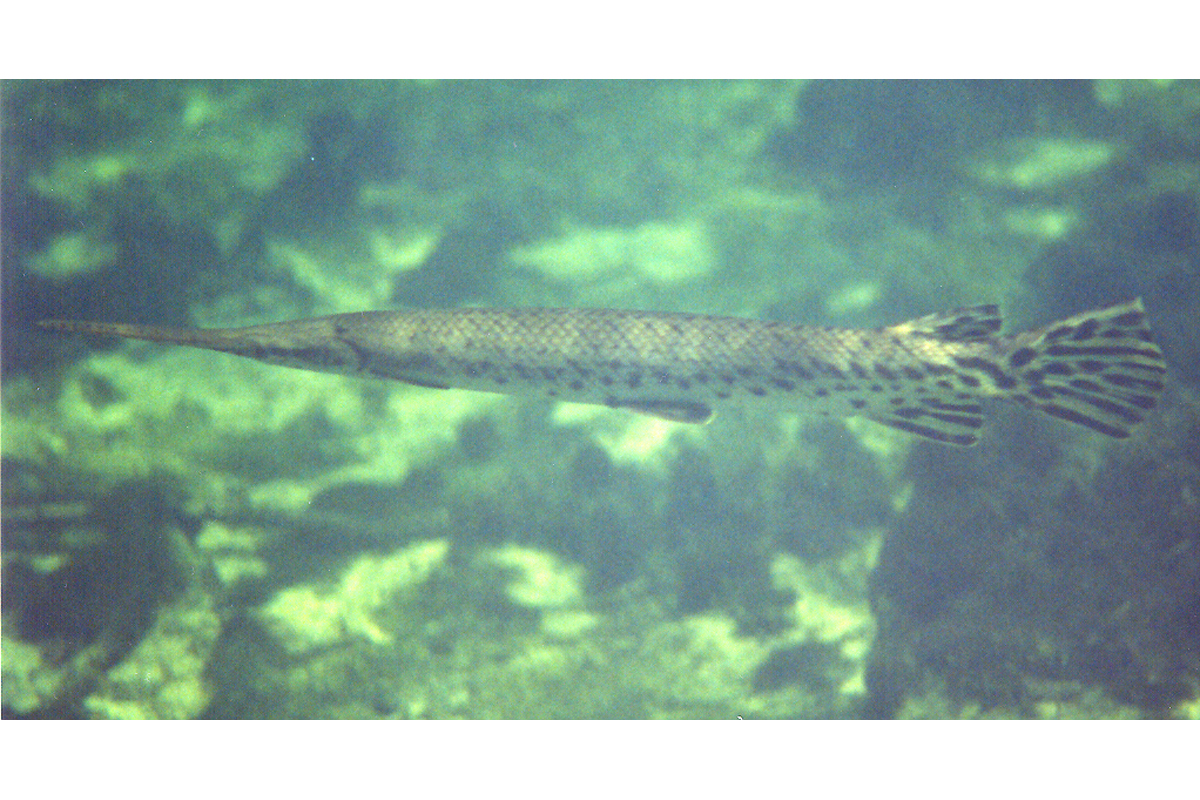 |
Class Teleostomi Order Lepisosteiformes Family Lepisosteidae Lepisosteus platyrhinchus (Florida Spotted Gar) This gar is smaller (132 cm) than the Longnose Gar, but this difference is primarily due to snout size. Florida Spotted Gar have a relatively broad, short snout and are liberally covered with black spots. Gar can be seen throughout the spring run. |
|
Family Amiidae Amia calva (Bowfin) This distinctive fish has an elongate body with a very long rippling dorsal fin, a spot at the base of the caudal fin, and tubular nostrils. The upper jaw extends past the eye. The color is brownish-olive mottled above and lighter below. This species can reach 110 cm total length. |
|
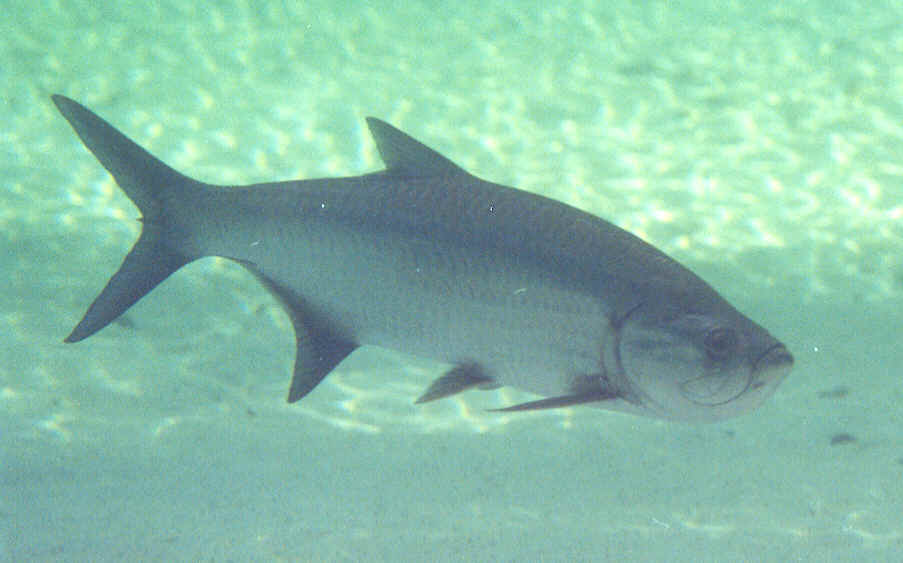 |
Order Clupeiformes Family Elopidae Megalops Atlanticus (Tarpon) Tarpon are common in the spring run during the winter and spring. These fish can be as long as 2.4 meters, but you won't see anything much bigger than 1 meter in the spring run. The most noticeable features of Tarpon are their large scales and the lower jaw that projects far past the anterior end of the upper jaw. Tarpon can be seen throughout the spring run. |
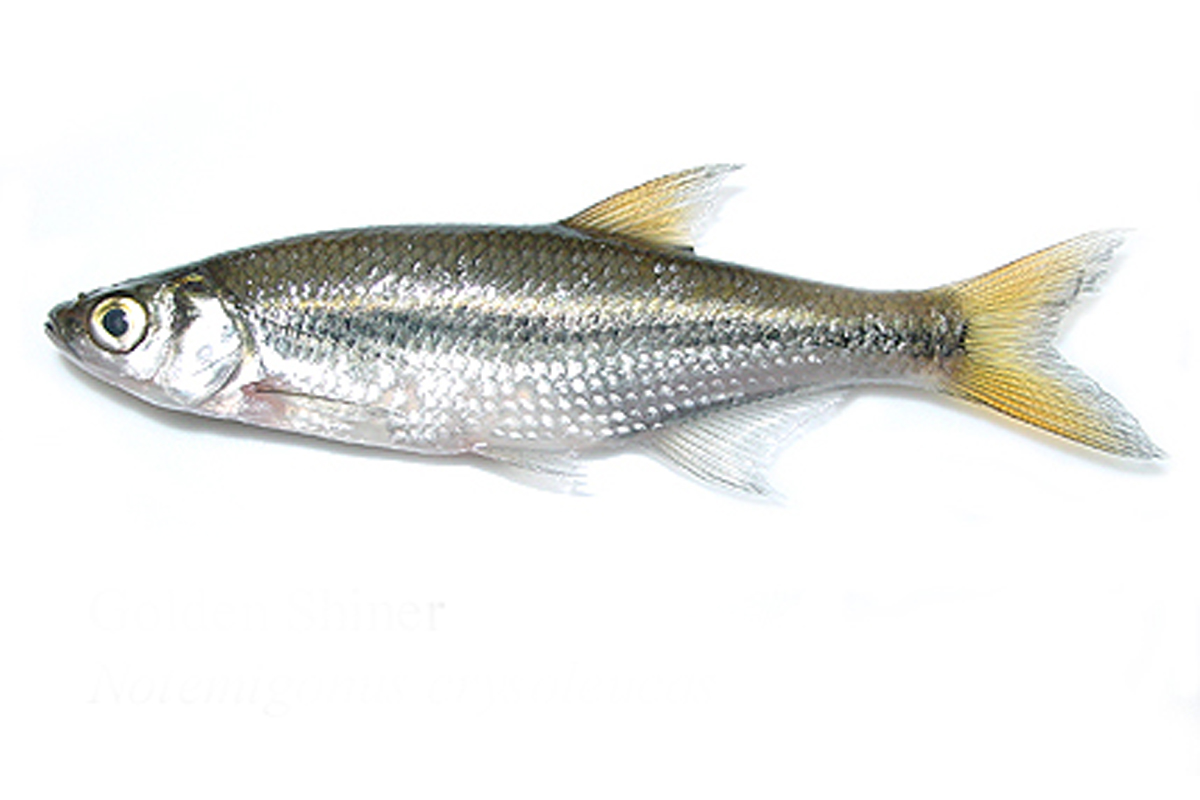 |
Order Cypriniformes Family Cyprinidae Notemigonus crysoleucas bosci (Southeastern Golden Shiner) This species has a compressed body, ventral keel between the pelvic and anal fins, and a decurved lateral line. Some individuals may have reddish dorsal, anal and caudal fins. Golden shiners can reach 12 inches in length, although those in Blue Springs are no more than 6 inches total length. |
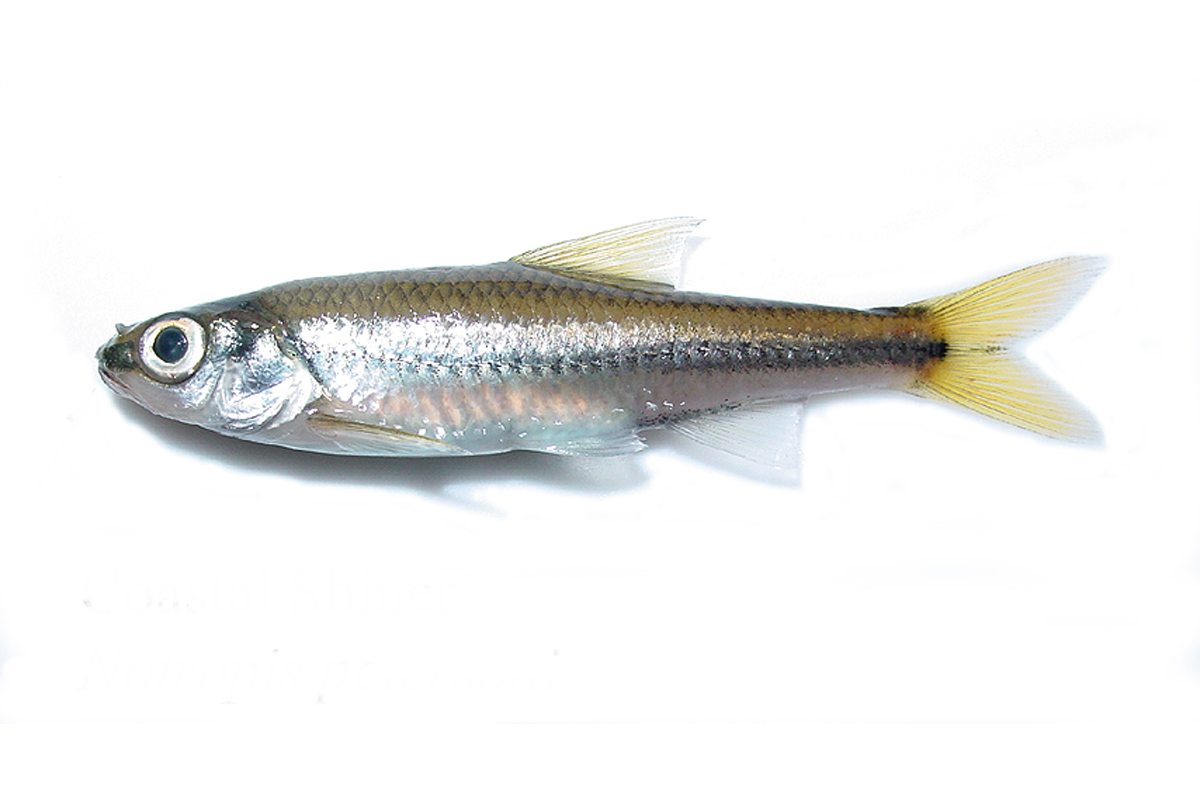 |
Notropis Petersoni (Coastal Shiner) The Coastal Shiner is one of the more common shiners in the area. This species has a wide lateral stripe that continues onto the tail in a wedge-like shape. The lower lips are only lightly pigmented and no black pigmentation is visible inside the mouth. The Coastal Shiner is a coppery-silver color and grows to 8.2 cm total length. |
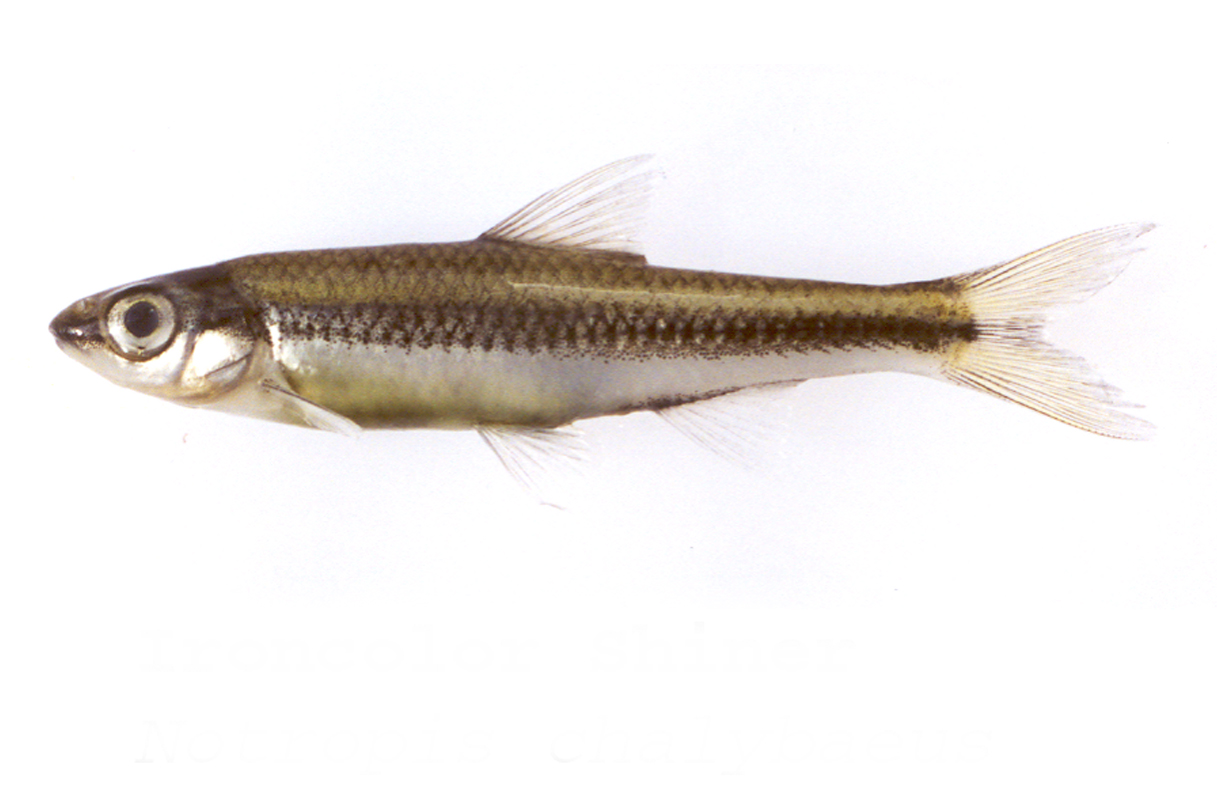 |
Notropis Chalybaeus (Ironcolor Shiner) This species is very similar to the Coastal Shiner, except that both the upper and lower lips are black (a continuation of the lateral stripe) and this pigmentation is also visible from the inside of the mouth. The color of this species is difficult to capture and is a silvery-copper color. There is also a thin gold stripe just dorsal to the wide black stripe. The scales above the lateral stripe are outlined with black pigment, whereas those below the lateral stripe are not. Ironcolor Shiners reach 6.5 cm total length. |
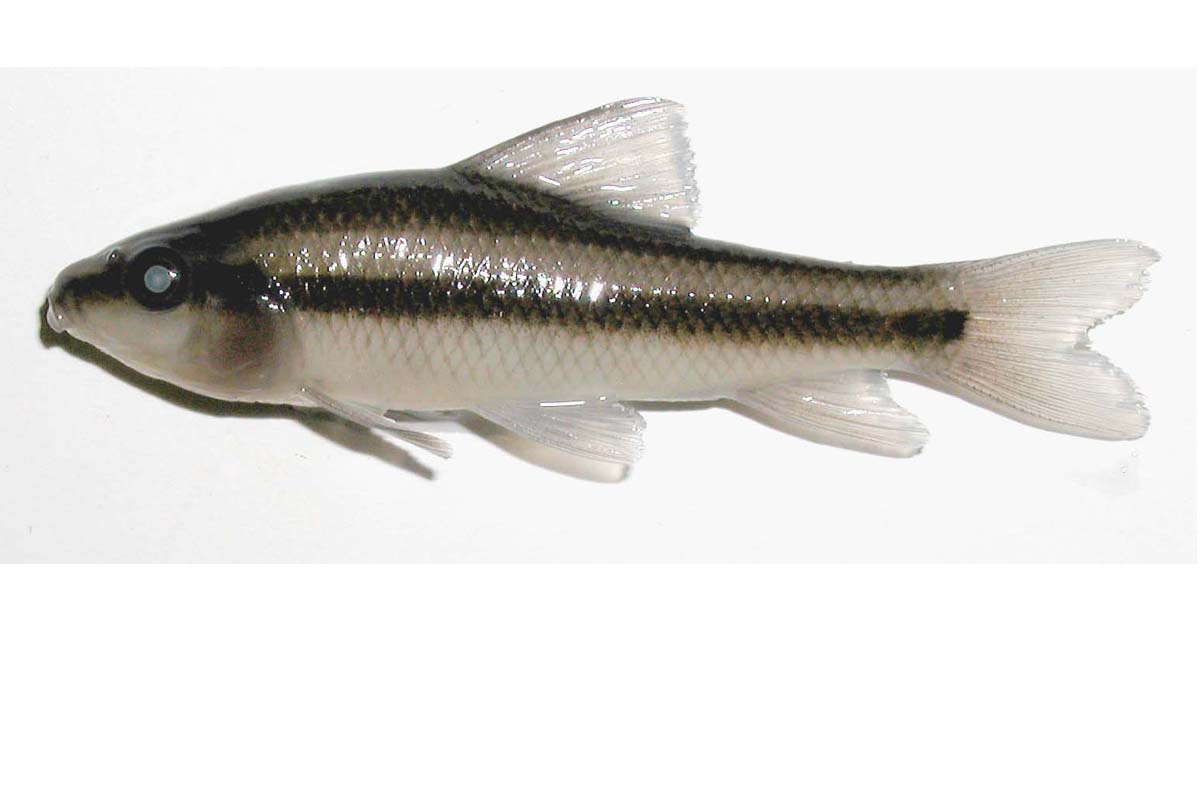 |
Family Catostomidae Erimyzon Sucetta (Lake Chubsucker) Juvenile Lake Chubsuckers can be found in the spring run. They closely resemble shiners, with the exception of a broad head, dark anterior edges on their dorsal and anal fins, and a ventral mouth with a fat lower lip. Juveniles are typically 10 cm total length. |
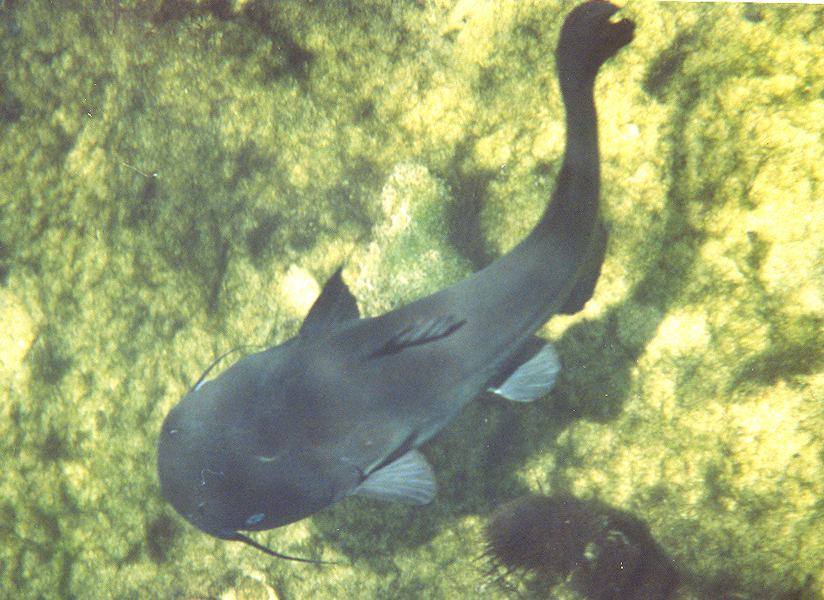 |
Family Amiuridae Ictalurus Punctatus (Channel Catfish) The Channel Catfish is one of the smaller catfish in Blue Spring, although it can reach 127 cm total length elsewhere. Notable features are the rounded edges of the broad anal fin, a forked caudal fin, dark slate blue back and sides, and white or blue barbels on the chin. Channel Catfish are not armored. Their color can vary somewhat with age, as can the presence of spots. Channel Catfish are very curious and are commonly seen playing "follow the leader" up to the air-water interface. |
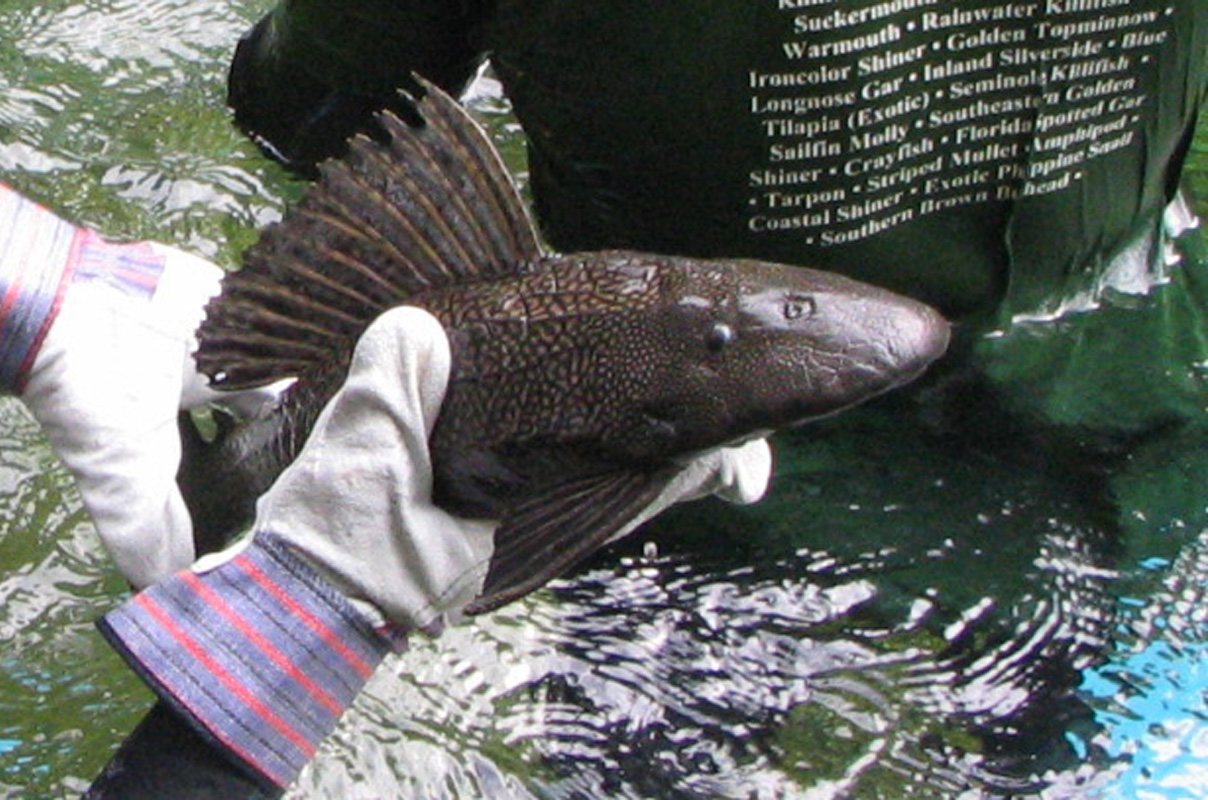 |
Order Siluriformes Pterygoplichthys disjunctivus (Sailfin Suckermouth Catfish) This species was first seen in Blue Springs run in 1999. Armored catfish are usually 20-50 cm (not counting the tail), have very large heads relative to body size, large pointed fins and spiny armor plating. You will see these fish draped on or around fallen trees, on the floor of the spring run, in the boil cave, and coming up for air. THIS IS AN EXOTIC INVASIVE SPECIES!!! |
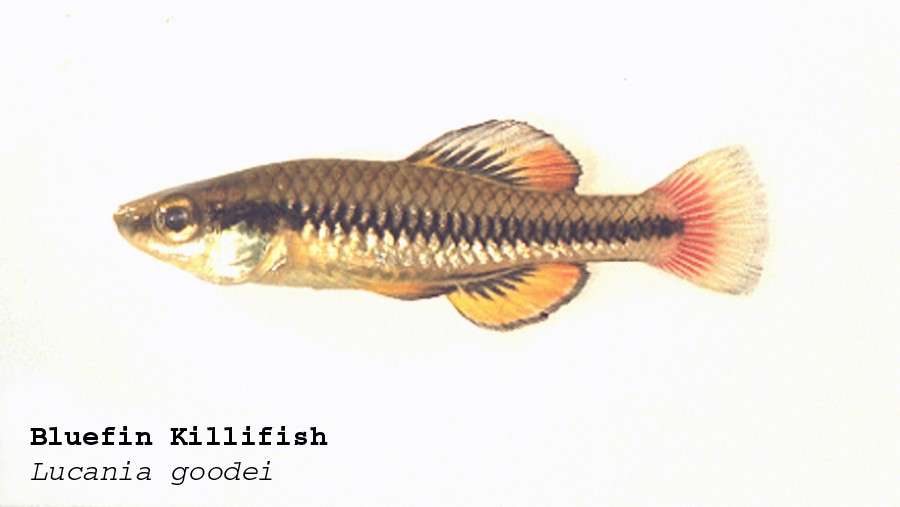 |
Order Cyprinodontiformes Lucania Goodei (Bluefin Killifish) The most notable features of Bluefin Killifish are the wide zig-zagging black stripes that run from the tip of the snout to the base of the caudal fin and the thin black stripe that runs from the base of the pectoral fin to the anteroventral edge of the caudal fin. Males have black pigment along proximal dorsal and anal fin rays, and the dorsal, anal and caudal fins are often tinged red at the base. Breeding coloration in males includes a red caudal fin, bright blue dorsal and anal fins, and the skin dorsal to the anal fin is pale purple. During the breeding season, the males will display their fins to competitors by flaring their fin rays. These fish grow to a total length of 5 cm. |
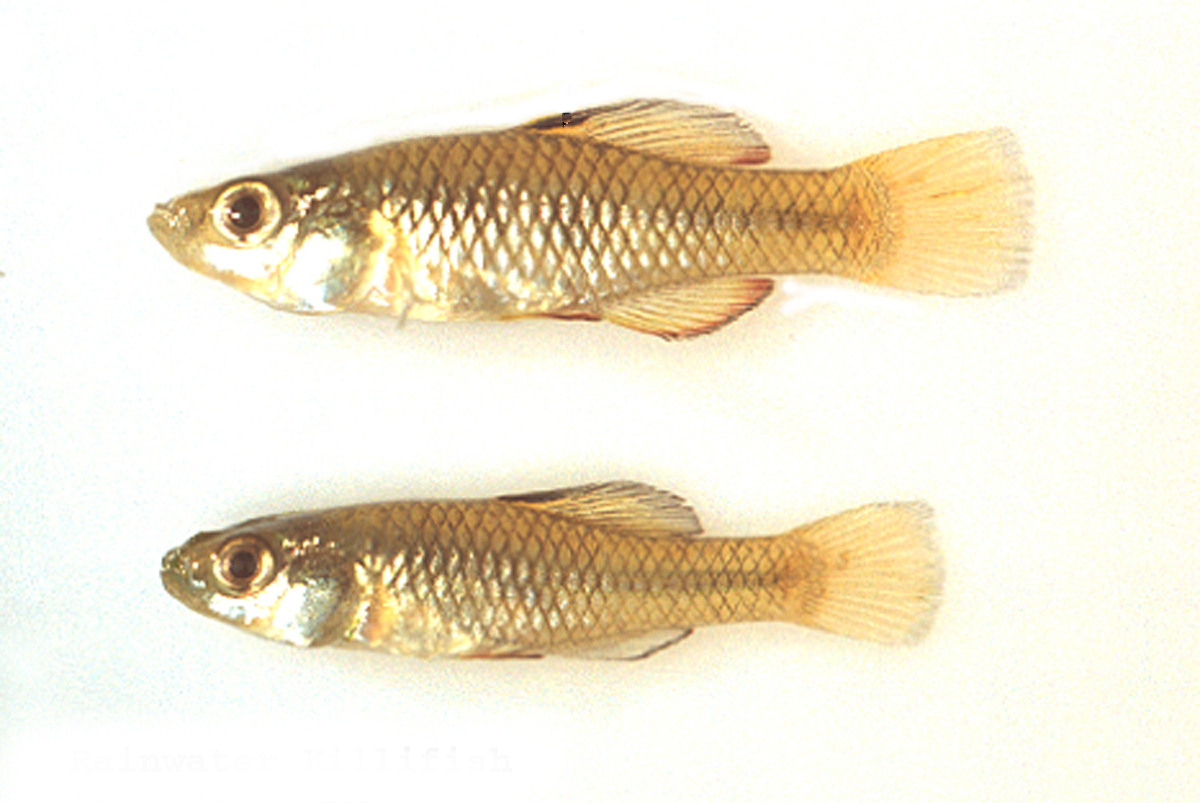 |
Lucania parva (Rainwater Killifish) Rainwater Killifish have few distinctive features, but can be identified by their somewhat blotchy iridescent pigmentation and their black pigmentation on the anteriormost dorsal fin ray. The blotchiness is mostly due to its large dark-edged scales and grey lateral stripe. Breeding coloration includes an increase in overall pigmentation and rust-colored dorsal, anal and caudal fins. This species can grow to 6 cm in total length. |
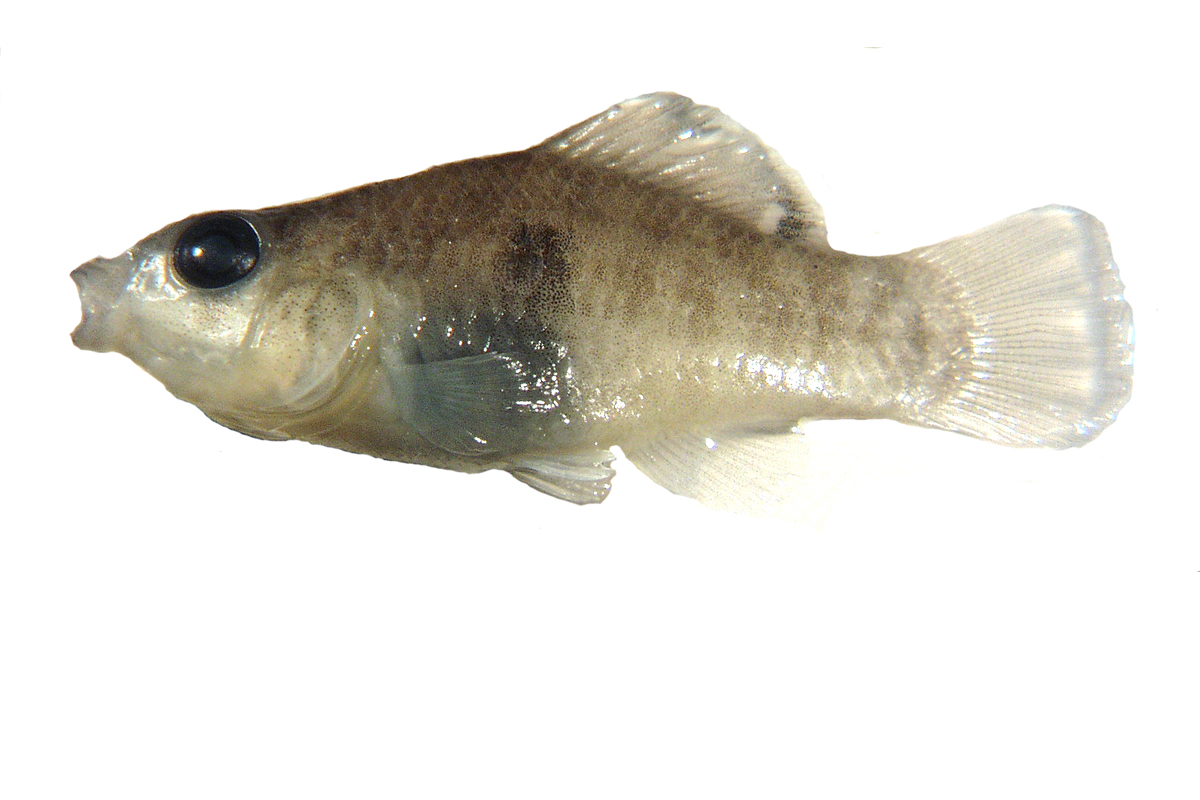 |
Jordanella floridae (Flagfish) The Flagfish resembles a juvenile sunfish, with the exception of a large black spot on its side. Usually has thin bands of black and orange and some gold flecks. The dorsal fin is long, with 14-18 fin rays. Fins are clear to dusky red. Large males may be bright orange. This species reaches 6.5 cm total length. |
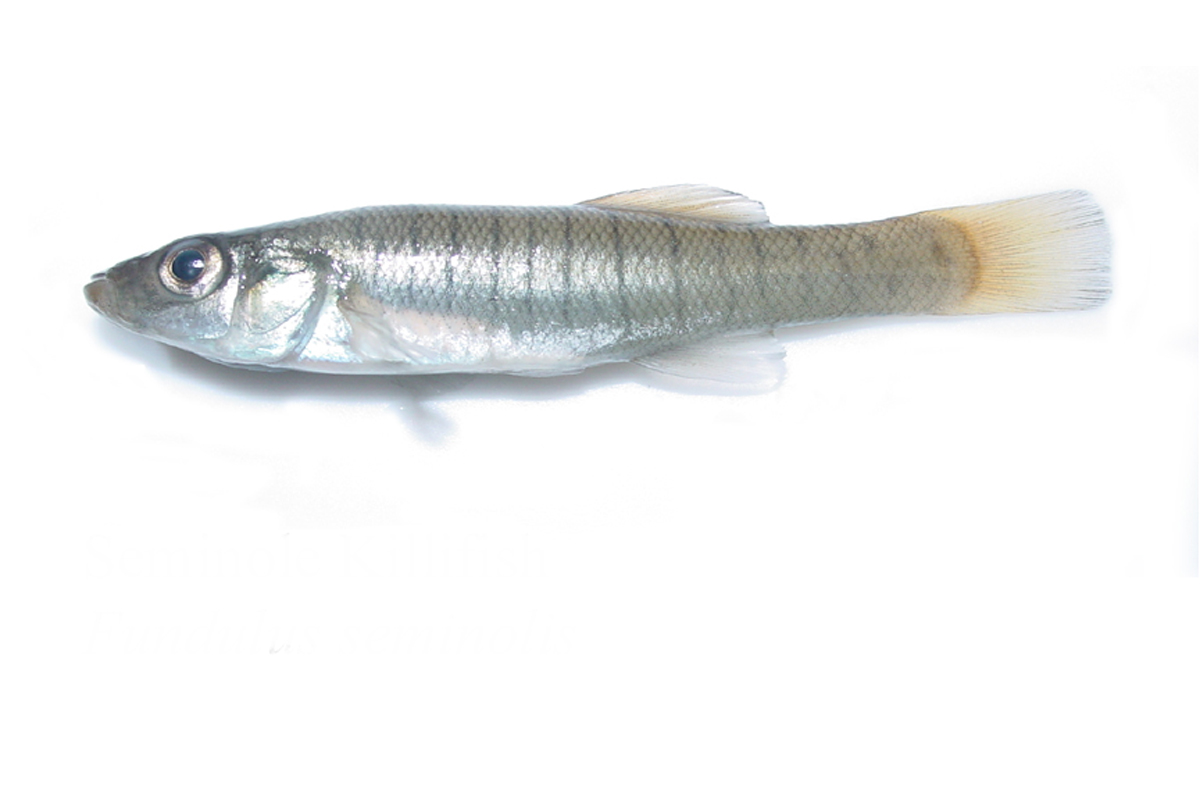 |
Fundulus Seminolis (Seminole Killifish) The Seminole Killifish is one of the largest killifish seen in the spring run. They are not heavily pigmented and may appear pale metallic green or almost white with horizontal rows made of small black spots. Breeding coloration of females will often include vertical green bars. Seminole Killifish may grow to 16 cm total length and have 16-17 dorsal fin rays (the very similar looking Banded Topminnow has 6-8). |
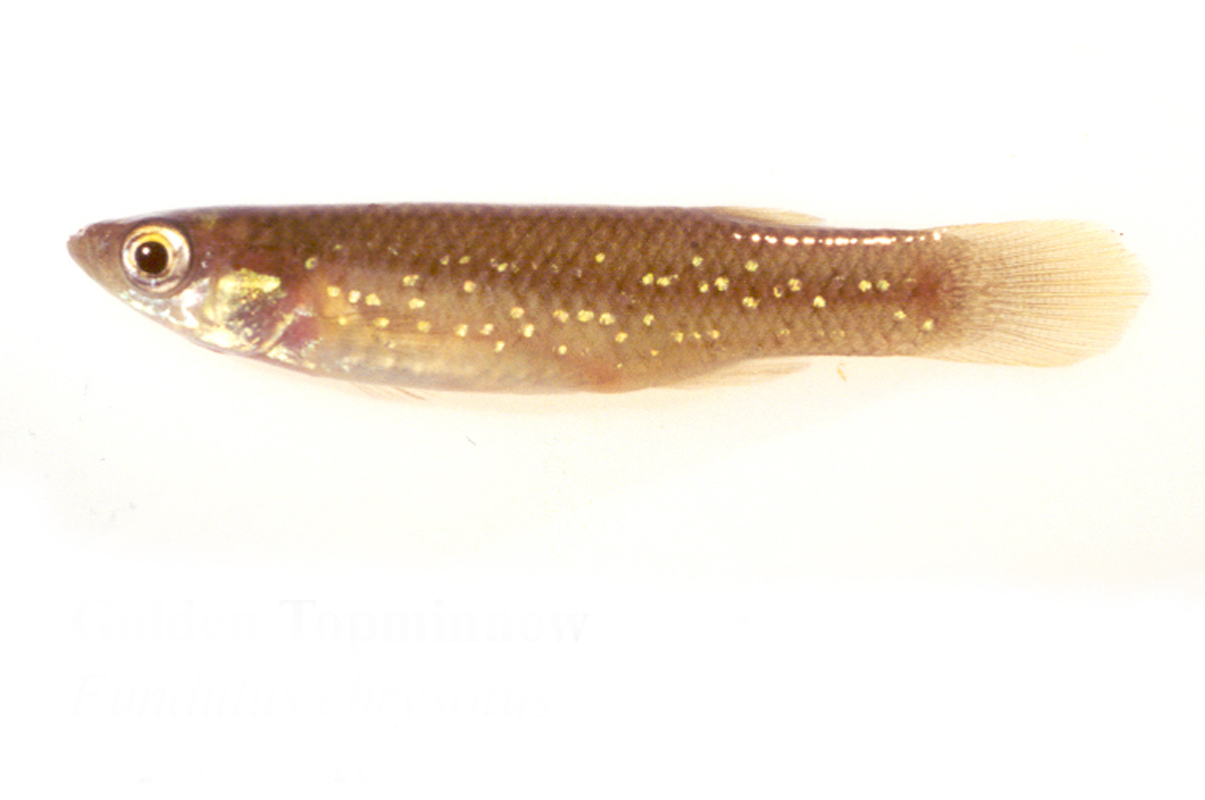 |
Fundulus Chrysotus (Golden Topminnow) The most notable feature of the Golden Topminnow is the scattering of large bright gold or small red flecks across its body. There can be some variety in coloration, ranging from the golden color you see in this figure to the male breeding coloration, which resembles the coloration of a rainbow trout! Additionally, this species can be melanistic. Golden Topminnows can reach a maximum total length of 5.5 cm. |
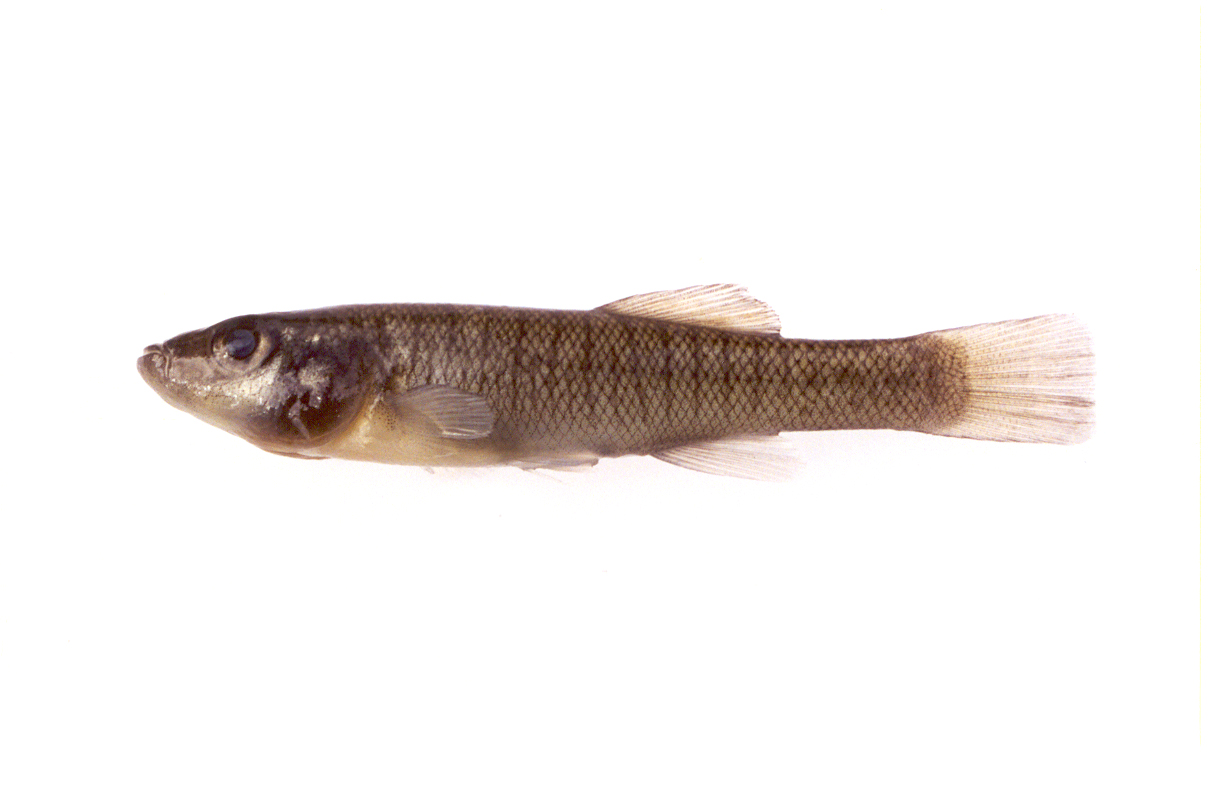 |
Fundulus Cingulatus (Banded Topminnow) The most notable features of the Banded Topminnow are the 12-15 horizontal green-brown bars along the side, and it's relatively broad head. This species has 6-8 dorsal fin rays. This species usually reaches a maximum total length of 7.5 cm. |
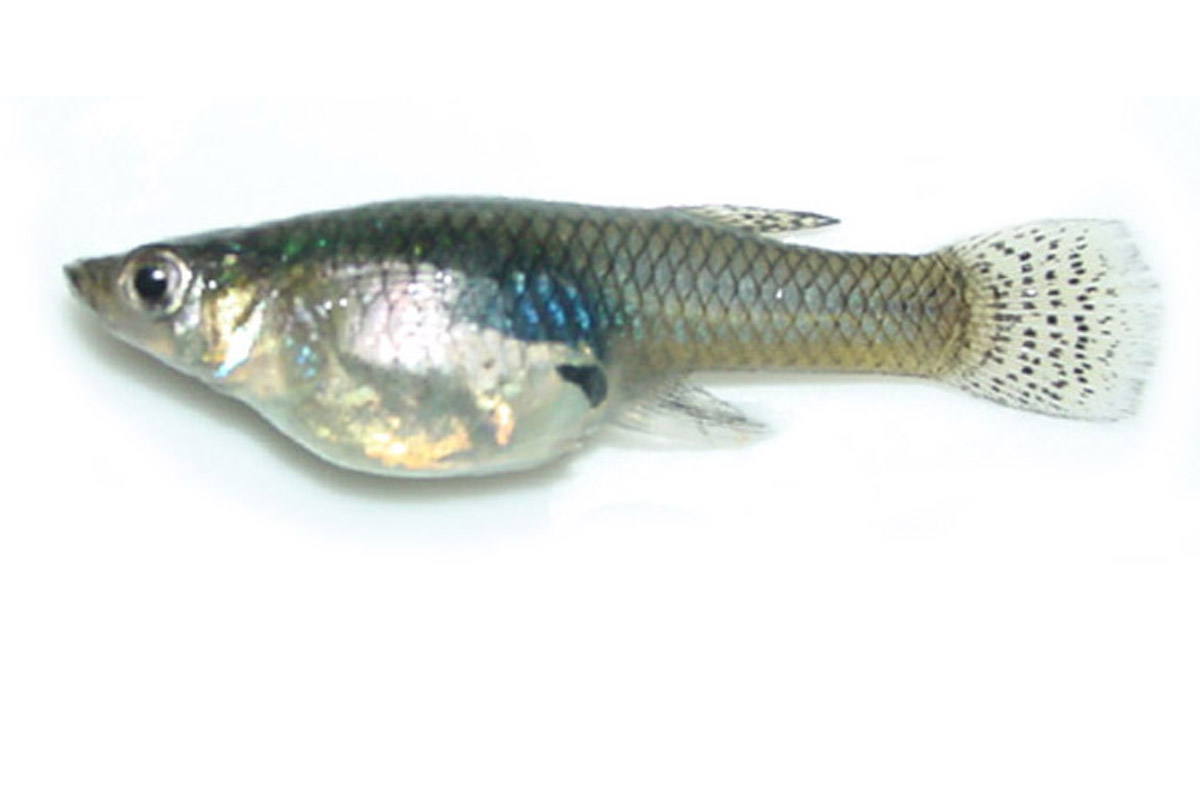 |
Gambusia Affinis Holbrooki (Eastern Mosquitofish) The most notable features in Mosquitofish are their long, narrow caudal peduncle, vertically stripped caudal fin, horizontally striped dorsal fin, and the elongated Gonopodium (modified anal fin ray) in males. Pregnant females sport a black anal spot and their abdomens may be grotesquely enlarged. Individuals may also have a yellow breast. Mosquitofish are usually fairly uniformly colored, but melanistic individuals are common in Florida. |
 |
Poecilia latipinna (Sailfin Molly) The most noticeable feature of mollies is the series of 5-6 lateral rows of dark brown spots. Large males also have a huge, orange-edged dorsal fin (sail fin), and when in breeding coloration, they have a dusky orange caudal fin and 4-5 short vertical bars along the side of the belly. Melanistic mollies have been found. This species has a very solid body and deep caudal peduncle. Mollies can grow to a maximum total length of 7.5 cm. |
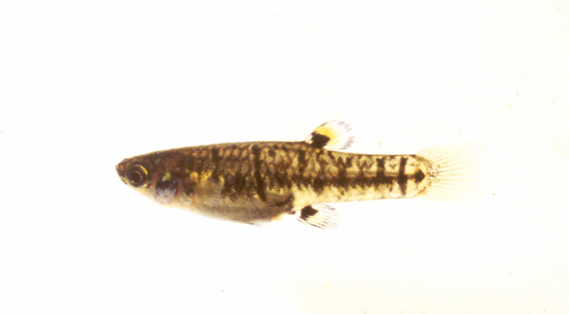 |
Heterandria Formosa (Least Killifish) The most notable feature of Leas Killifish is the series of vertical stripes intersecting a wider lateral stripe. These fish have a deep belly, but relatively narrow and long caudal peduncle. The dorsal fin has a large black spot at its base and may have a second, more distal, yellow spot. Females have a black spot at the base of the anal fin. This species reaches a maximum total length of 3.5 cm. |
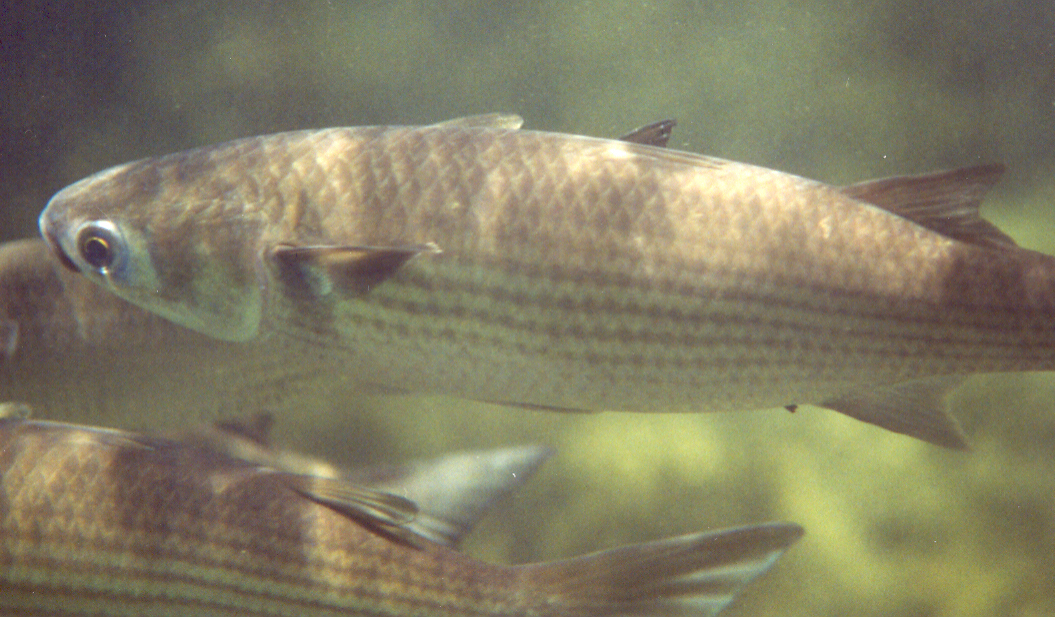 |
Order Mugiliformes Family Mugilidae Mugil cephalus (Striped Mullet) The Striped Mullet is commercially important and is usually considered a marine species, although clearly, they do enter freshwater. Mullet spawn offshore, and so do seasonal residents of the spring. Striped Mullet are distinct from other mullets due to the series of dark spots along their side that give the appearance of spots. The dorsal and anal fins are unscaled, 2nd the dorsal fin origin is aligned with anal fin origin. This species reaches a maximum length of 91 cm. |
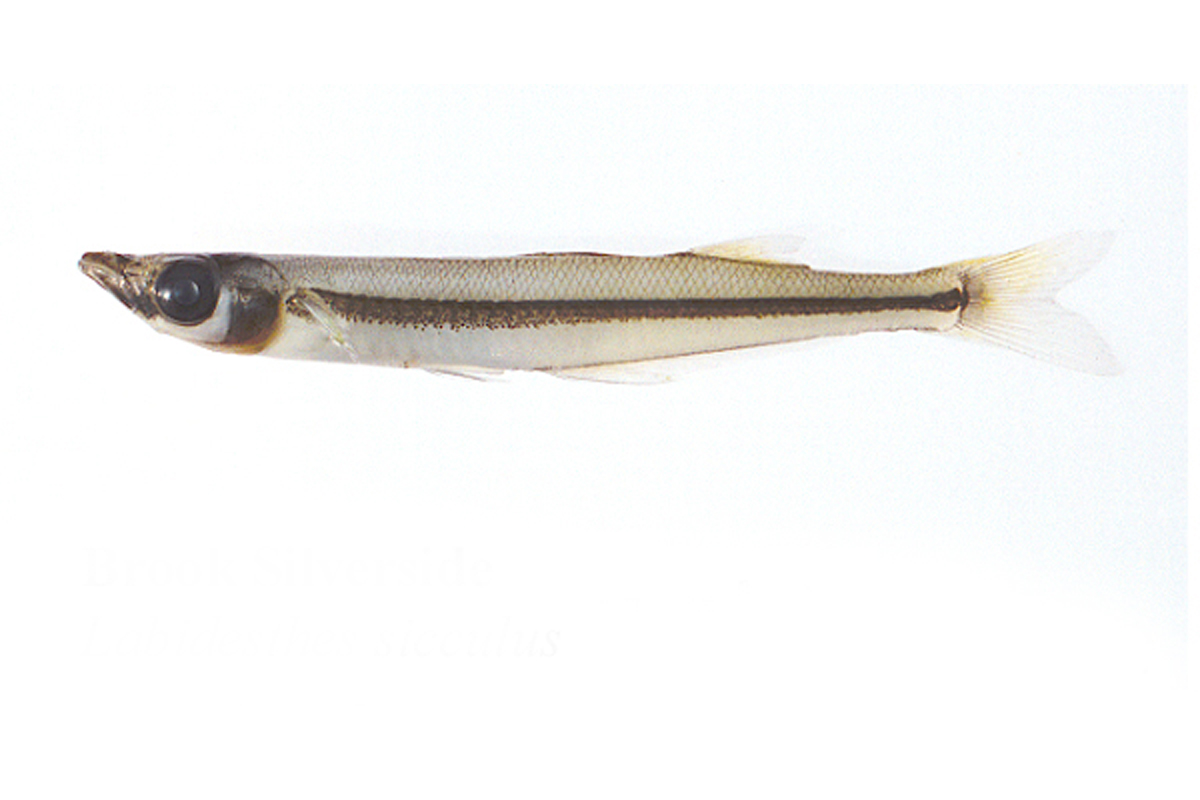 |
Family Atherinidae Labidesthes Sicculus Vanhyningi (Florida Brook Silverside) The most notable features of the Brook Silverside are its silver color, beak-like mouth and large eyes. Silversides have two dorsal fins; a small anterior fin (insertion above anal fin insertion) and a larger posterior fin well back on the body. In life, the body is silvery green with a brighter silver lateral stripe. |
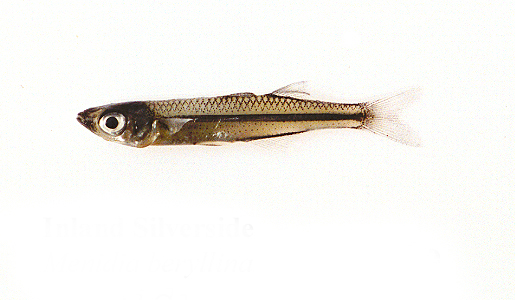 |
Menidia Beryllina Atrimentis (Inland Silverside) The Inland Silverside resembles the Brook Silverside, but can easily be identified by its jaw morphology. The Brook Silverside has a beak-like jaw, but the Inland Silverside has a protrusible jaw. Also, the first dorsal fin origin is anterior to the origin of the anal fin. In life, the body is silvery green with a wide silver stripe. This species grows to 7.5 cm. |
|
Order Perciformes Family Centrarchidae Pomoxis Annularis (White Crappie) At first glance, this fish may resemble a Largemouth Bass, but if you look more closely, you will see that the area over the eye is decurved and the pre-dorsal area is very long (the dorsal fin is set far back). The mouth is large and extends under the eye. Unlike the Largemouth, the White Crappie does not have black lines radiating from its eye. Dark bars extend from the dorsum to just below the lateral line. This species can reach 53 cm in total length. |
|
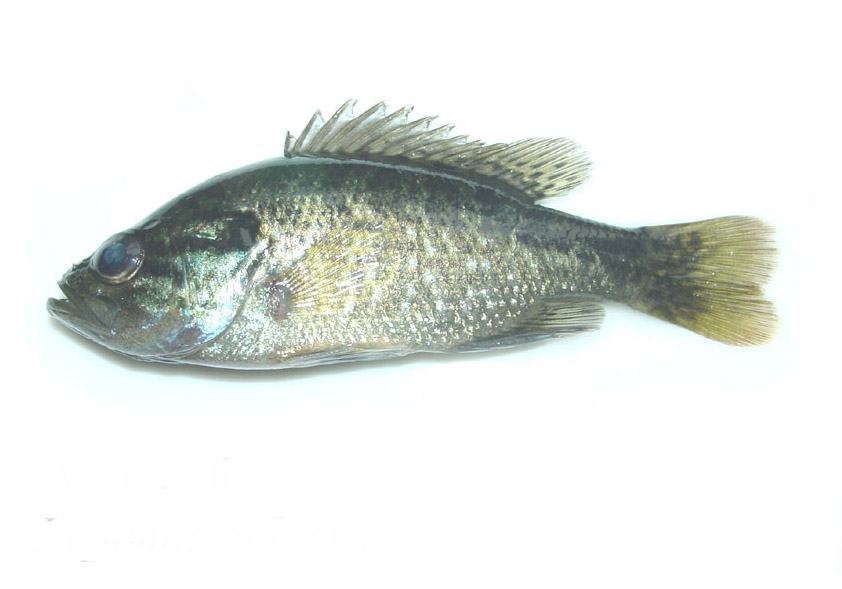 |
Lepomis Gulosus (Warmouth) The Warmouth has a relatively large mouth (extending to the middle of the eye), a short, round pectoral fin and lines radiating from behind the eye. Other notable features are the dotted lines on the dorsal fin, the round black spot on the ear of the operculum and the relatively slender body. This species may have a red eye, although this was not obvious in this young specimen. Warmouths can grow to 31 cm in total length. |
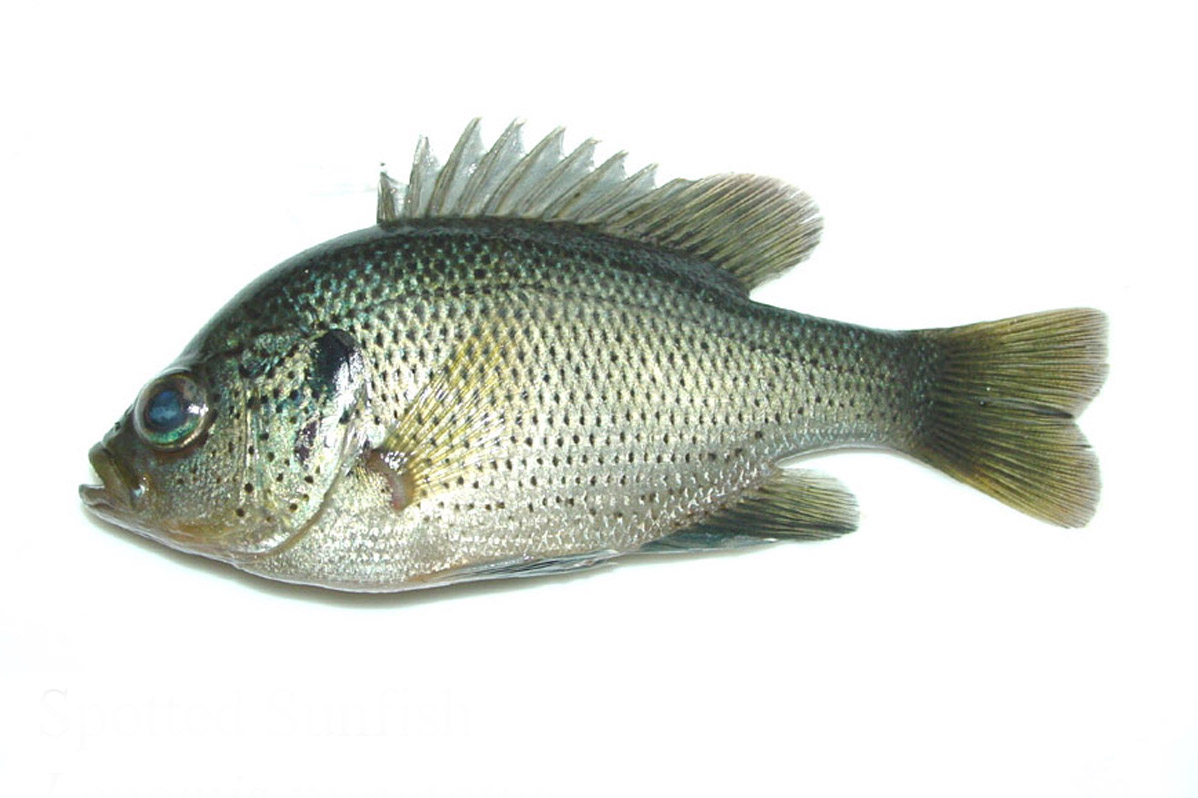 |
Lepomis Punctatus Punctatus (Spotted Sunfish) This subspecies of the Spotted Sunfish is covered with small black spots; the spots on the body are very regular (about one per scale), whereas those on the head are more irregular in size and distribution. The pectoral fin does not extend past the eye when folded forward. The pelvic and anal fins are much darker than the dorsal and caudal fins. This species can grow to 20 cm in total length. |
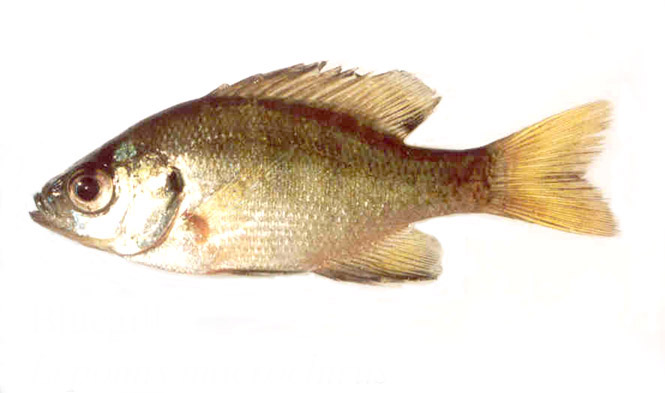 |
Lepomis Macrochirus Purpurescens (Bluegill) The Bluegill is one of the most populous species in the spring run, and it exhibits a wide variety of patterns during its life. Bluegills in the clear spring waters tend to have 8 or more vertical bars, and these are especially prominent in juveniles. The opercular ear is black. Very young or breeding males usually have a blue metallic sheen on their bodies. Breeding males will also have a red-orange breast and belly. Adults have a large black spot at the rear of the dorsal fin, but this is less prominent in younger fish. Another feature of the Bluegill is the length of the pectoral fin; this long-pointed fin will extend far past the eye when bent forward. The jaw is relatively small and does not extend past the middle of the eye. This species can grow to total length of 41 cm. |
|
Lepomis Microlophus Microlophus (Redear Sunfish) The Redear Sunfish bears a strong resemblance to the Bluegill (size of mouth, length of pectoral fin) and occurs in the same areas of the spring run, but it can be distinguished by a red spot on the opercular ear and the lack of a black spot on the posterior dorsal fin. Redears tend to be smaller than Bluegills; reaching a maximum size of 25 cm total length. |
|
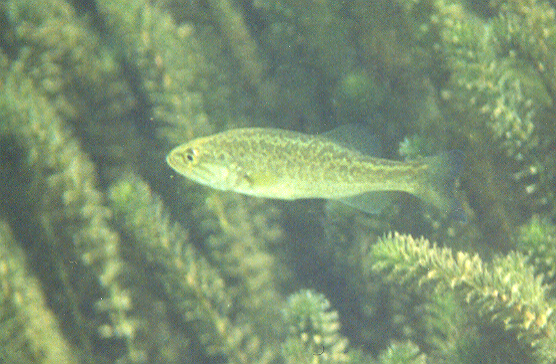 |
Micropterus salmoides Floridanus (Florida Largemouth Bass) The Largemouth Bass is a relatively long (up to 97 cm), slender-bodied fish. The body is olive green above a dark green lateral stripe, and lighter below; the stripe is most obvious in older fish. The most distinctive feature of this species is an array of three or four short stripes radiating posteriorly from the back of the eye. The jaw of this species extends past the eye (that of the Smallmouth Bass extends to just under the eye). |
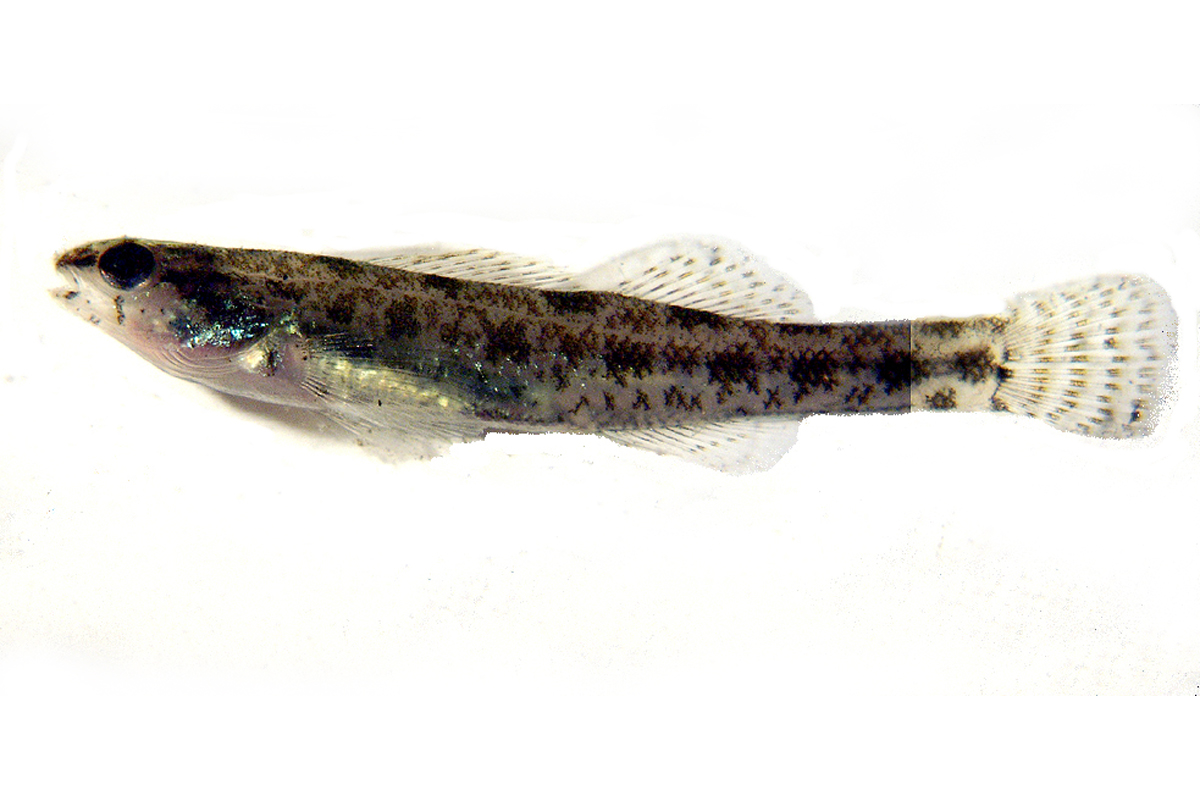 |
Family Percidae Percina nigrofasciatus (Blackbanded Darter) This darter is a relatively small (up to 11 cm), slender-bodied fish. It is distinguished by the two long dorsal fins, the series of 6-8 dark saddles on its back, and 12-15 diffuse bars on its side. The head tapers to a rather beaky rostrum and the eyes are somewhat dorsally located. We have captured a single individual in the lower reaches of the spring run. |
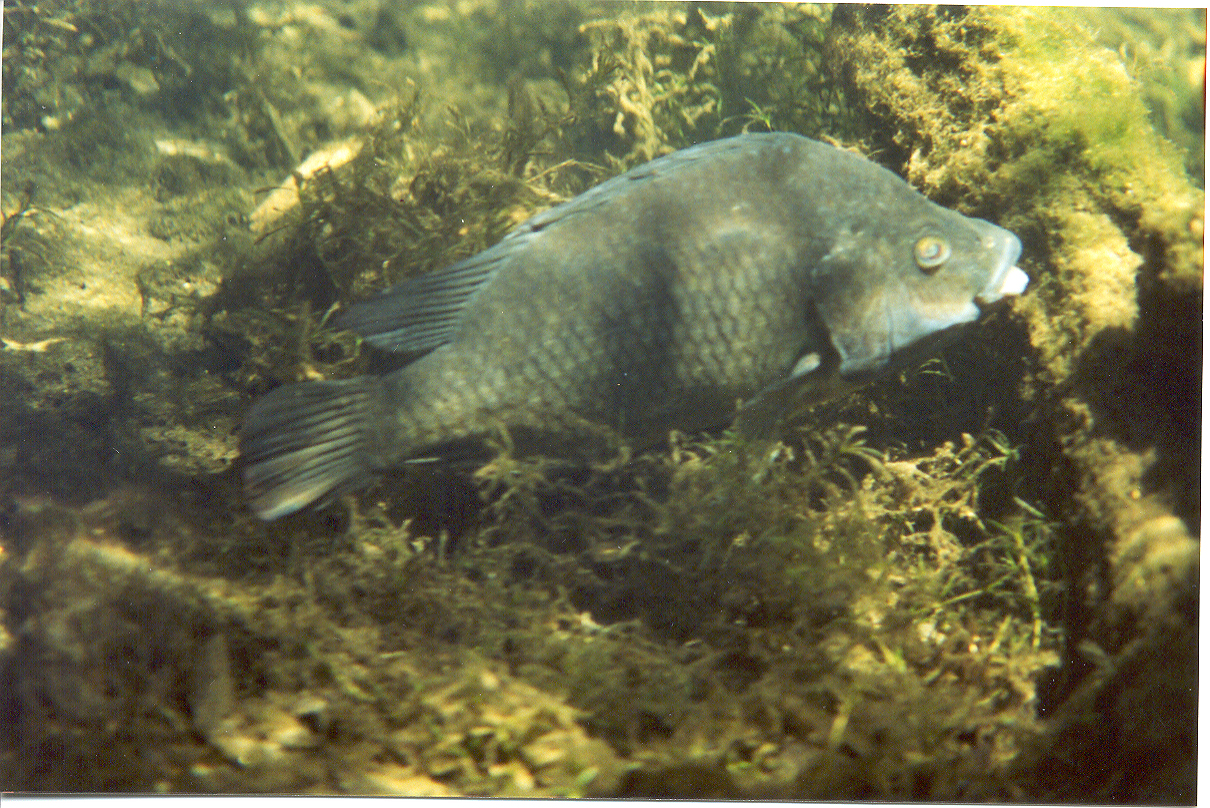 |
Family Cichlidae Tilapia aurea (Blue Tilapia) Tilapia are common in the spring and run during cold weather because they cannot survive in the cold temperatures of the St. Johns River in winter. During the coldest periods of the year, Tilapia may be present in the thousands in the lower third of the spring run. These fish are native to Africa but have become established in the St. Johns River drainage, probably through the release of aquarium fish and escape from fish farms. This species is nearly always seen in schools and can reach 37 cm in total length. EXOTIC, INVASIVE SPECIES!!!! |
|
Colossoma sp. (Pacu) These distinctive fish resemble giant piranha (fortunately they are not carnivores). This species is deep-bodied (39 cm) and the 7 individuals seen in the spring run are about 80-90 cm in total length. The rostrum is quite blunt, and large blunt teeth extend from fleshy lips. The sides of the Pacu are sprinkled with large (> 2.5 cm) gold flecks. EXOTIC SPECIES!!! |